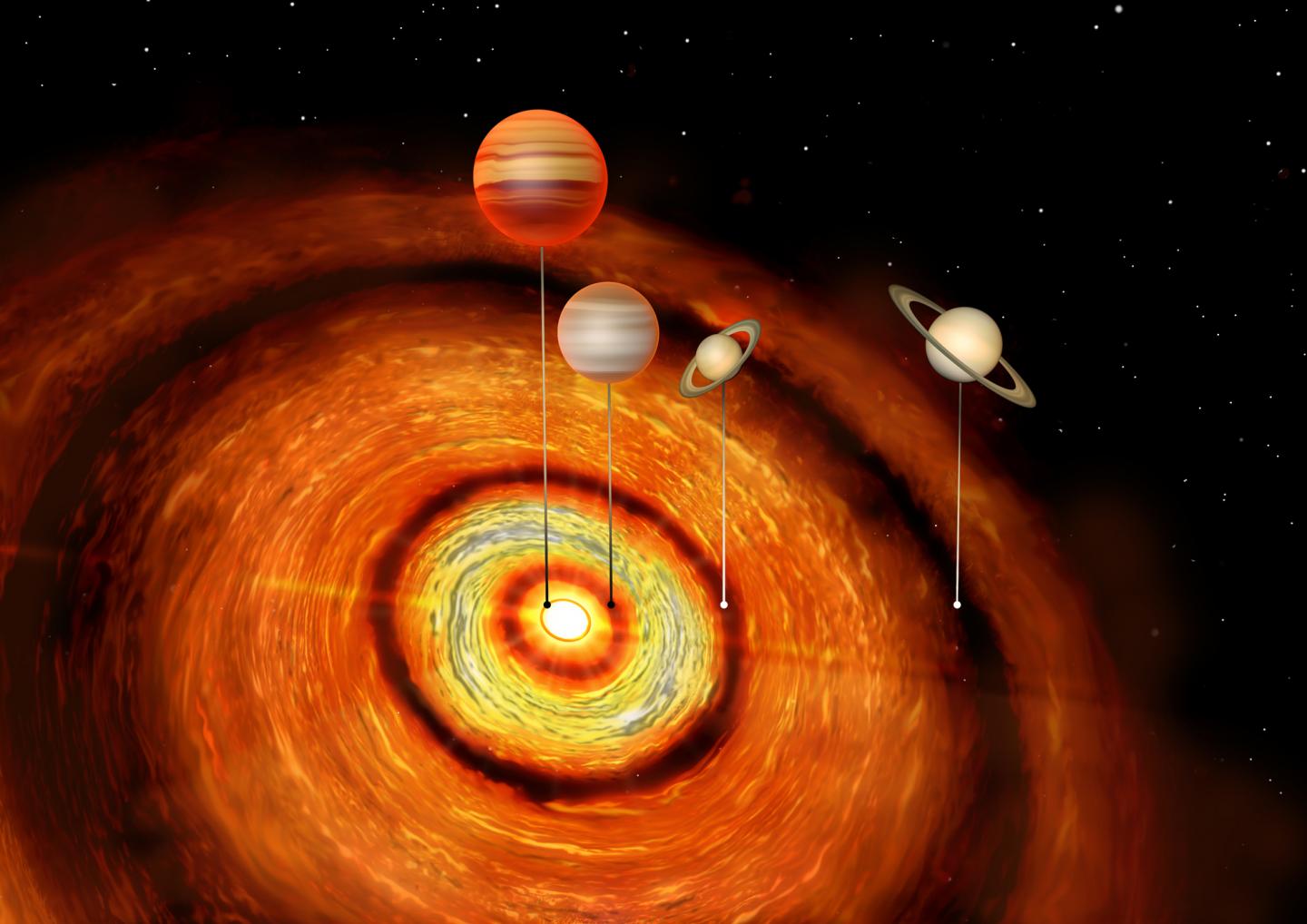Four gas giants and a young sun
CI Tau, which is 450 light-years from Earth, is a T-Tauri star – these are stars that are still in their birth phase. Fusion has only recently ignited in its core, and the star is still contracting to its final size. Even though CI Tau is only approximately two million years old, it already has a companion: a “hot Jupiter” that has a mass of eight to ten Jupiters and is orbiting its host star at a close distance.
It was previously thought that at least ten million years were needed to form these conditions. That’s why scientists were surprised when they discovered the companion CI Tau b in 2016. Now they have found even more surprises, because apparently there is not only one, but four planets within the protoplanetary disk surrounding the star, as a team from the University of Cambridge and others has determined with the help of the Atacama Large Millimeter/submillimeter Array (ALMA).
The four companions have very different orbits. The already known “Hot Jupiter” has an orbit similar to Mercury’s. The outermost planet, approximately as large as Saturn, orbits at a distance of 100 astronomical units (au), almost a thousand times as far as the innermost. Planet number 2, also of a size similar to Jupiter, is at a distance of 13 au (roughly equivalent to Saturn’s orbit), planet number 3, with a size similar to Saturn, orbits at a distance of 39 au (equivalent to Pluto’s orbit).
The discovery raises interesting questions. First, it was previously thought that hot Jupiters would have to form on much wider orbits, which is why most of these planets are also much older than this specimen. Therefore, scientists conjecture that, within its short lifetime, CI Tau b must have moved from an outer orbit closer to its star. Maybe its three siblings were to blame for this migration?
But then there is still the mystery of how the two outer planets could have formed at all. “Planet formation models tend to focus on being able to make the types of planets that have been observed already, so new discoveries don’t necessarily fit the models,” says Prof. Cathie Clarke of the University of Cambridge. “Saturn mass planets are supposed to form by first accumulating a solid core and then pulling in a layer of gas on top, but these processes are supposed to be very slow at large distances from the star. Most models will struggle to make planets of this mass at this distance.”
